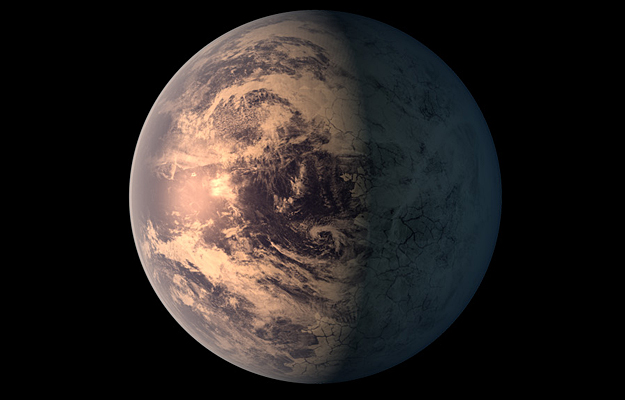Observations of TRAPPIST-1 Exoplanetary System Fosters a New Biomarker

The recent discovery of seven potentially habitable Earth-size planets around the ultra-cool star TRAPPIST-1 has further fueled the hunt for extraterrestrial life. Current methods focus on closely monitoring the host star to look for biomarkers in the transmission signature of exoplanet’s atmosphere. However, the outcome of these methods remain uncertain and difficult to disentangle with abiotic alternatives.
Recent exoplanet direct imaging observations by THIRSTY, an ultra-high contrast coronagraph located in La Trappe (France), lead us to propose a universal and unambiguous habitability criterion which we directly demonstrate for the TRAPPIST-1 system. Within this new framework, we find that TRAPPIST-1g possesses the first unambiguously habitable environment in our galaxy, with a liquid water percentage that could be as large as ∼ 90 %.
Our calculations hinge on a new set of biomarkers, CO2 and CxH2(x+1)O (liquid and gaseous), that could cover up to ∼ 10 % of the planetary surface and atmosphere. THIRSTY and TRAPPIST recent observations accompanied by our new, unbiased habitability criterion may quench our thirst for the search for extraterrestrial life. However, the search for intelligence must continue within and beyond our Solar System.
M. Turbo-King, B.R. Tang, Z. Habeertable, M.C. Chouffe, B. Exquisit, L. Keg-beer
(Submitted on 31 Mar 2017)
Comments: Accepted in JoA; 5 pages, 3 figures and 2 tables
Subjects: Popular Physics (physics.pop-ph); Earth and Planetary Astrophysics (astro-ph.EP); Instrumentation and Methods for Astrophysics (astro-ph.IM)
Cite as: arXiv:1703.10803 [physics.pop-ph] (or arXiv:1703.10803v1 [physics.pop-ph] for this version)
Submission history
From: Martin Turbet
[v1] Fri, 31 Mar 2017 08:53:49 GMT (1215kb,D)
https://arxiv.org/abs/1703.10803








